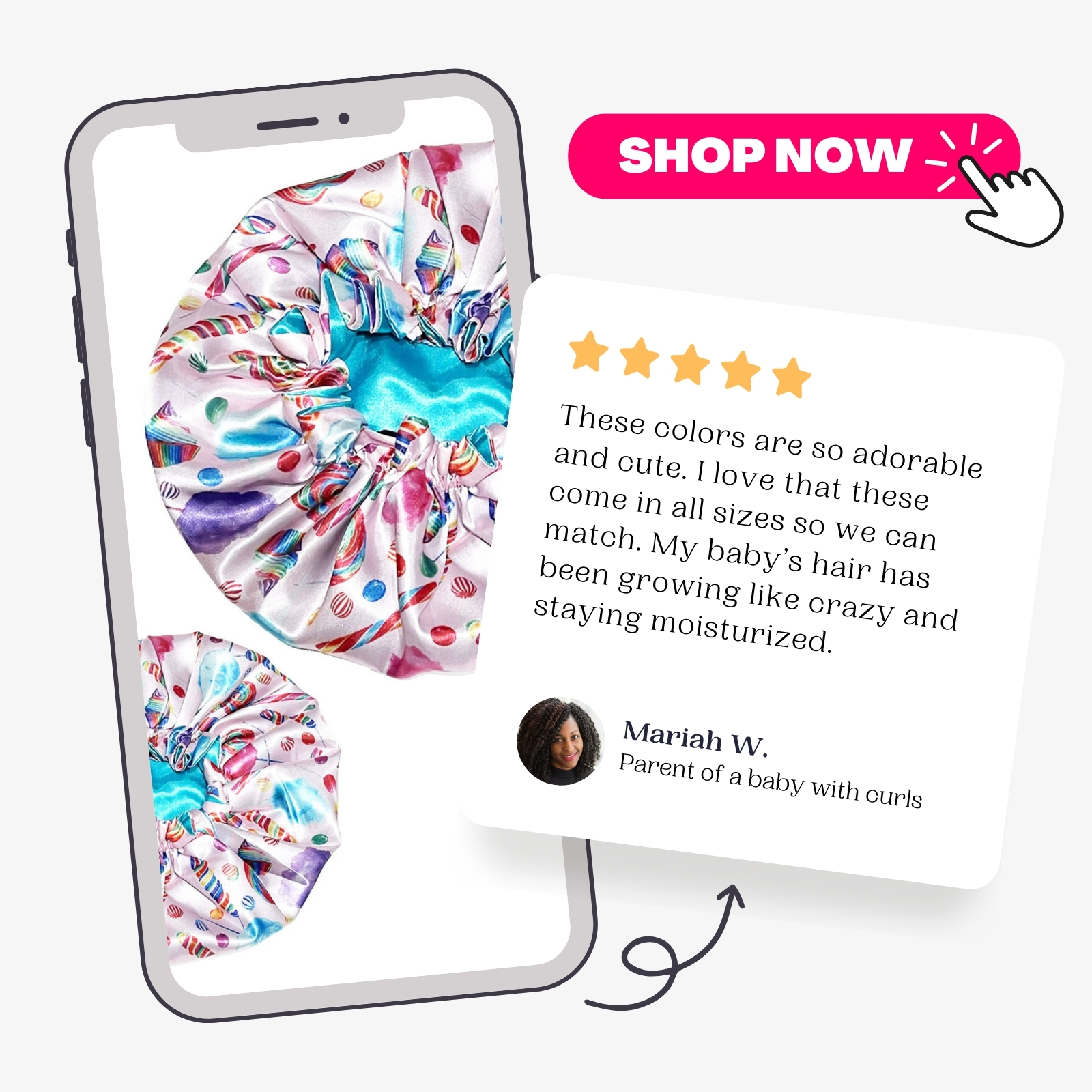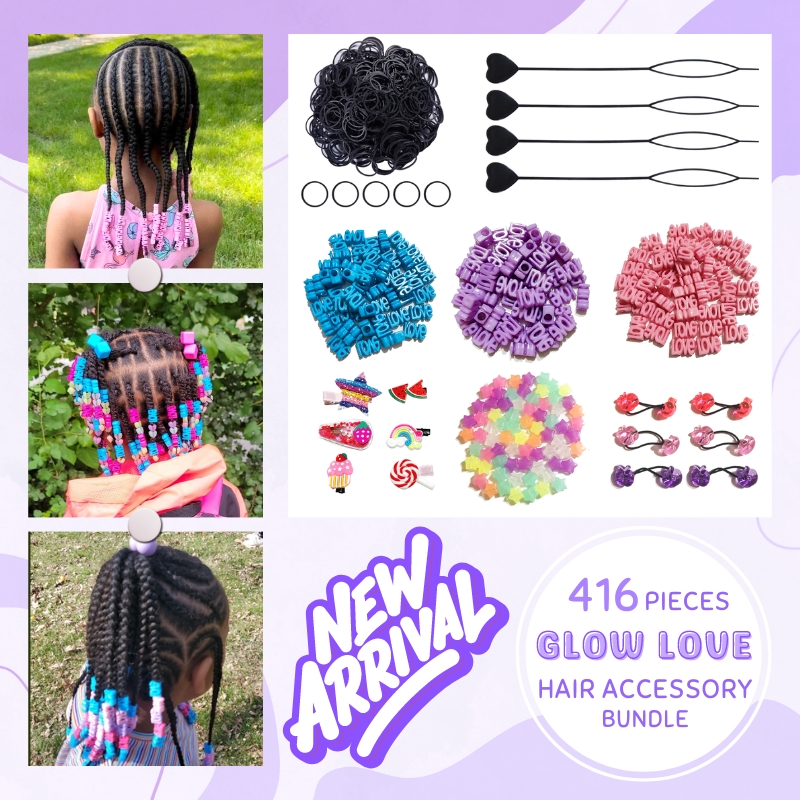
Growth and Maintenance
Understanding Hair Porosity and Density
If you haven’t learned by now, hair porosity and density are two extremely important points to consider when customizing your child’s hair care regimen. Simply classifying their coils by hair type is no longer enough to develop a list of fool-proof products. For example, what works for one 4a may not give similar results on your 4a child. Why not? Porosity and density.
What Is Porosity?
In short, porosity determines your hair’s ability to absorb and retain moisture. Highly porous hair is usually considered damaged. The cuticles are separated and it may not be able to maintain a moisturized appearance for a number of reasons – anything from chemical damage to just the luck of the draw. Conversely, hair with low porosity doesn’t absorb moisture well making it hard to process with chemicals or moisturize without seeming oily and stringy.
Being aware of the porosity of your child’s hair gives you a better understanding of the amount of moisture they need on a daily basis. You can plan your weekly and monthly routines, such as deep conditioning and hot oil treatments, as well.
Let’s take a better look at the difference in each porosity level.
 Low Porosity Hair – The cuticles of these strands are tightly bound. If the strands were magnified, the scales would overlap each other and lay flat. It is resistant to water penetrating through it and as a result, hair is left dry, even despite your best efforts.
Low Porosity Hair – The cuticles of these strands are tightly bound. If the strands were magnified, the scales would overlap each other and lay flat. It is resistant to water penetrating through it and as a result, hair is left dry, even despite your best efforts.
Children with low porosity hair have to have frequent washes to avoid product buildup. If not, the hair will take on a stiff and sticky feeling.
Children with low porosity hair should:
- Have frequent deep conditioning treatments with low-to-moderate heat to help the strands of the cuticle open up to receive the moisturizing product.
- Use humectants such as animal or vegetable glycerin or honey.
- Use daily moisturizers with water listed as the first ingredient.
- Use oils light weight oils such as argan, almond, or grapeseed oil
- Make sure to moisturize the hair while it is wet (not soaking wet or bone dry) so that the cuticles don’t have time to close up.
- When performing routine moisturizing, choose products with a lot of emollients – jojoba oil, coconut oil, shea butter, and even mineral oil. These attract moisture to the hair and seal it in. Children with this hair type benefit from light and liquidy products such as hair milk, nothing oily or heavy.
A good way to tell if your child has low porosity hair is if:
- Their hair always seems dry regardless of your best efforts to moisturize and deep condition it.
- After washing you see beads of water on the hair strands
 Medium Porosity Hair – Children in this category don’t usually require a lot of maintenance. Their cuticles aren’t as tight and they benefit from a healthy amount of intake-to-escape moisture balance. Better known as “normal” porosity, this type of hair usually maintains styles longer without a lot of interference. You’ll still need to give your child a good deep conditioning now and then, and it’s ok to use products with added protein, but not in daily moisturizing.
Medium Porosity Hair – Children in this category don’t usually require a lot of maintenance. Their cuticles aren’t as tight and they benefit from a healthy amount of intake-to-escape moisture balance. Better known as “normal” porosity, this type of hair usually maintains styles longer without a lot of interference. You’ll still need to give your child a good deep conditioning now and then, and it’s ok to use products with added protein, but not in daily moisturizing.
If your child has medium porosity hair, you may have noticed that their hair is extremely easy to care for and it retains a lot of moisture and doesn’t easily dry out.
 High Porosity Hair – As mentioned earlier, some children just have hair that is naturally highly porous. Others may be a result of past chemical processing, lack of proper maintenance, or even the environment. These cuticles are spread wide, sometimes gaping with holes. It accepts a lot of moisture, making it easier to tangle and frizz.
High Porosity Hair – As mentioned earlier, some children just have hair that is naturally highly porous. Others may be a result of past chemical processing, lack of proper maintenance, or even the environment. These cuticles are spread wide, sometimes gaping with holes. It accepts a lot of moisture, making it easier to tangle and frizz.
If your child lives in a hot and highly humid area, you’ll need to use anti-humectant products on their hair. Making the right choices will help seal their cuticles, blocking the amount of moisture it absorbs.
Leave-in conditioners, good moisturizers and sealants help battle this hair type’s tendency to release moisture as well. For an extra boost, you may want to apply hair butter on top, sealing the layers of your moisturizing products.
Defining Density
While porosity is based on the hair’s ability to absorb moisture, density is determined by how closely your child’s strands are grouped on their hair. Children with low hair density have thinner hair than kids with higher density levels. It seems like a trivial matter but knowing their rating also contributes to the proper product selection process. Using the right mixture can either add volume to your baby’s hair or lay it down and tame it.
Low Density Hair – You can tell if your child has low hair density if you can easily see their scalp if the hair is hanging down while dry. If this is the case, their hair will respond best to mousse based products that add fullness. Volumizing shampoos and conditioners and products with thickening agents best nurture the coils of low density hair.
Medium Density Hair – Children whose hair falls in this classification have a lot more product and styling options to choose from. You can opt for mousse and dry shampoos to give their hair even more volume or weigh it down with creams and butters. Above all else, I’m partial to the wash and go. There’s nothing better than putting the natural back in natural hair.
High Density Hair – Hair with high density can benefit from mane taming products like creams, butters, or even gel. Or, you can leave their hair alone and embrace the age old motto “The bigger the hair, the harder they stare”.
The Porosity Test
There are a number of ways to test your child’s hair in order to determine its porosity. Here are some suggestions:
- Float Test – Remove some strands from your child’s comb or brush then add them to a cup of water. Wait approximately 2-4 minutes then take a look at the strands again. If they’re floating, they have low porosity hair. If it sunk, their hair is highly porous.
- Sliding Test – Hold a strand of their hair between your thumb and index finger and slide your fingers upwards toward their scalp. Notice the way the strand feels. Little bumps are an indicator of lifted cuticles, meaning highly porous hair. If the strand feels smooth, then their hair has low porosity.
- Wet Test – Wet the hair, then squeeze out the excess water. It should still be wet, but not soaked and dripping. Now, feel their strands. Rough hair, means low porosity. If it simply feels wet with no extra texture, it’s considered medium or “normal”. If their hair is sticky and feels like product is still on their hair, then your child has highly porous strands.
Naturals see success when we learn to work with our hair rather than against it. Even if you’ve sworn by a certain product for years, it may not offer your child’s hair the most benefit. Understanding their individual porosity and density level will help you make educated decisions when working on their hair. Whether wavy, curly, coiled, or kinked, there’s always a way to make them look amazing.





Pingback: Common Curly Hair Care Terms: Definitions & Explanations - Multiracial MediaMultiracial Media | Voice of the Multiracial Community
Pingback: Beauty products are full of risky chemicals. I tried to get rid of them. - Vox.com - The Thirsty Skin